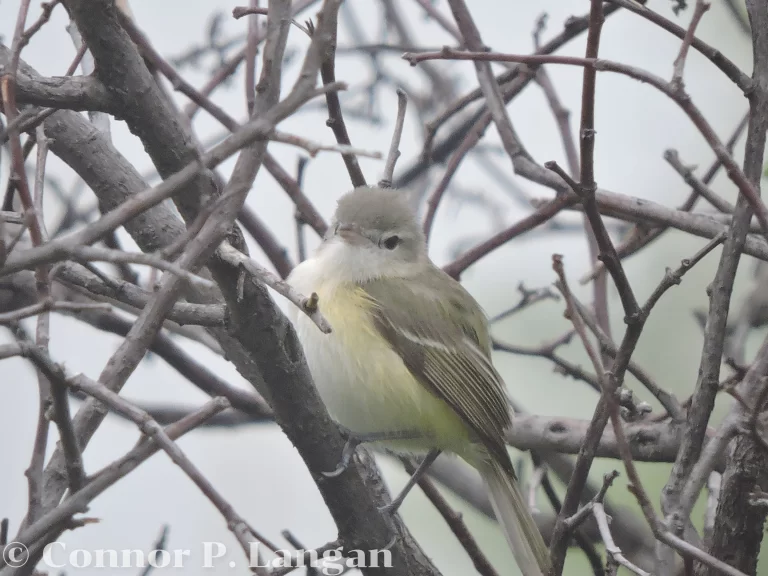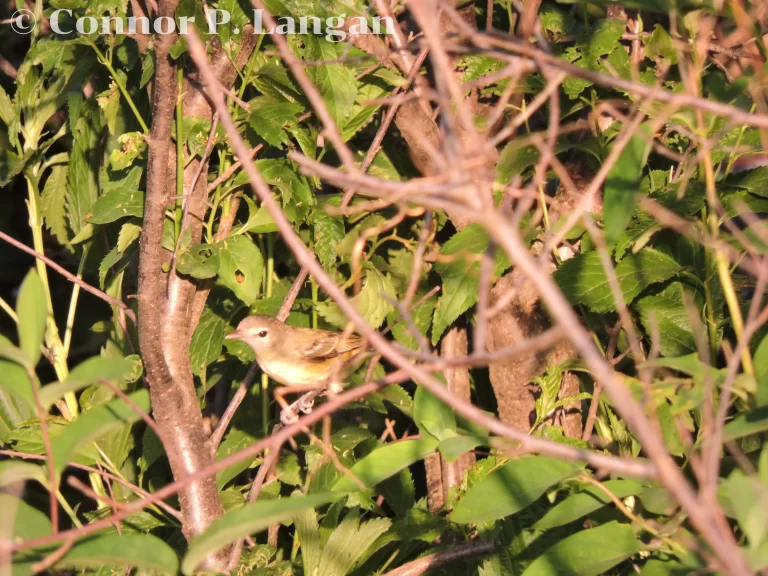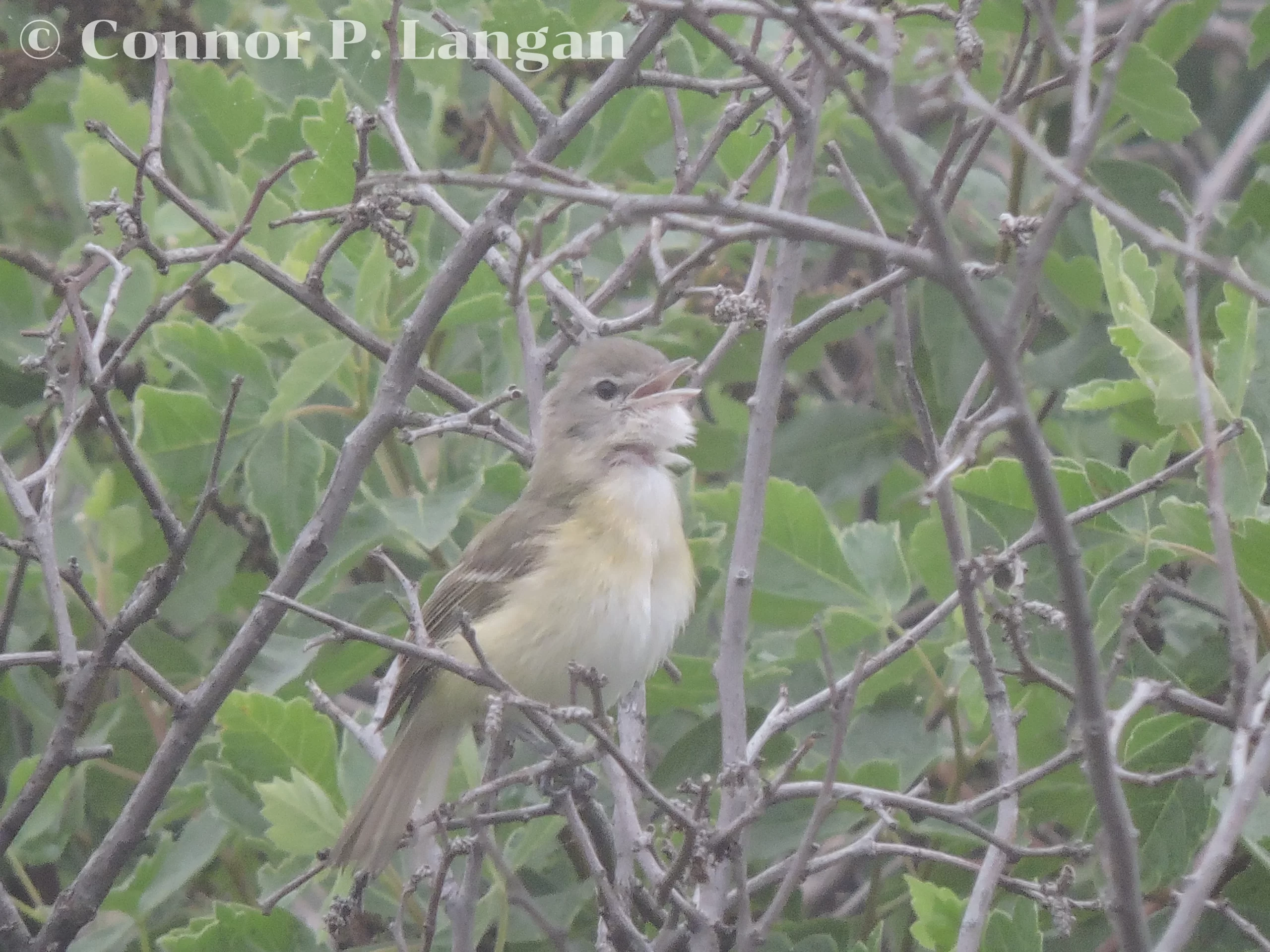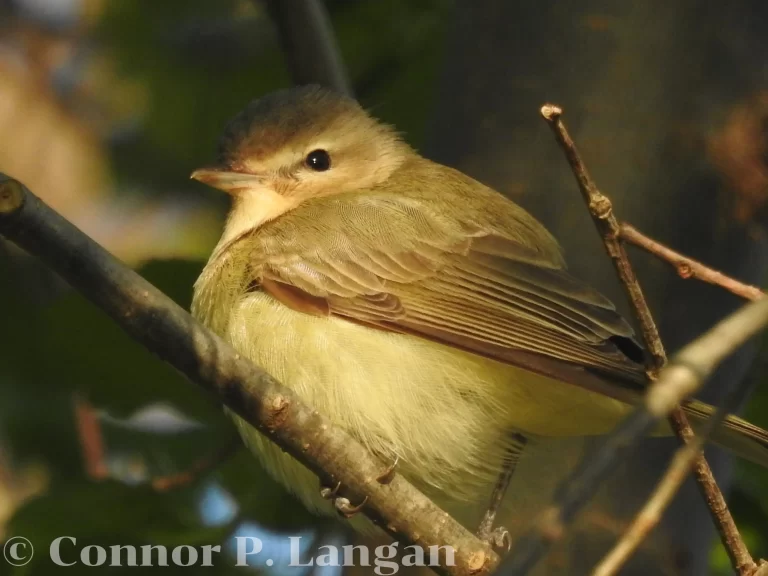Description
Bell’s Vireos are songbirds with rounded heads, a small bill (for a vireo), and fairly long tails.
These birds are among the smallest vireos, measuring only 4.5 to 4.9 inches. Bell’s Vireos weigh around 0.3 ounces.
Male and female Bell’s Vireos are indistinguishable. There are several subspecies of Bell’s Vireos, with each having noticeable visual differences from one another. All Bell’s Vireos have two faint wingbars on each wing and gray caps.
Birds in the Eastern Bell’s Vireo subspecies have yellow flanks and green backs. The endangered Least subspecies is often entirely gray. The Arizona subspecies has a brownish back and faint yellow flanks, but it is otherwise gray.


Behavior
Bell’s Vireos are assertive vireos that will relentlessly attack intruders such as rival males. Moreover, potential threats such as jays, blackbirds (especially cowbirds), and crows are attacked when they near a Bell’s Vireo nest.
Male Bell’s Vireos frequently sing to proclaim their territory. Despite their persistent singing, Bell’s Vireos are difficult to locate because they keep a low profile in the scrubby habitat that they frequent.
Diet
Bell’s Vireos forage much lower to the ground than most other vireo species. Insects comprise the vast majority of a Bell’s Vireo’s diet, and they eat fruits far less frequently than many other vireos.
Habitat
These songbirds frequent patches of shrubs or young trees in otherwise open habitats. You will not find a Bell’s Vireo in a forested area.
Some Bell’s Vireos seek out scrubby areas adjacent to waterways. Look for Bell’s Vireos in patches of shrubs or early successional habitat during migration. Wintering Bell’s Vireos frequent similar habitats to the areas occupied during migration and breeding.
Range
The breeding range of Bell’s Vireos is located within the American Southwest, Great Plains, and Midwestern states like Arkansas, Missouri, Iowa, and Illinois. The Least subspecies breed in southern California. Birds also breed in north-central Mexico.
The wintering range of Bell’s Vireos includes Baja California, western Mexico, and northern Central America.
Breeding
Male and female Bell’s Vireos form monogamous pairs that they maintain throughout the breeding season. Bell’s Vireo pairs have several different elaborate courtship displays that they perform during stages of the breeding season.
A pair will maintain a territory that ranges in size from 0.25 to 5 acres.
Males and females work together to choose an optimal nesting location. The pair then collaborates to construct a nest for themselves.
The cup-shaped nests constructed by Bell’s Vireos are usually 2 to 5 feet off of the ground. Nests are made of grasses, leaves, lichens, and various debris. The materials are bound together and affixed to a forked branch using spider webs.
Females typically have a single brood of eggs annually, but they may have two. Clutches contain up to 4 eggs, and they hatch in about two weeks. The young leave the nest after 10 to 12 days.
Backyard Birding
Those who observe these birds in their backyards should consider themselves fortunate. Bell’s Vireos will not eat from bird feeders or nest in birdhouses. These birds will not show up in a backyard unless it is an open space with shrubs interspersed.
Population Status
Overall, Bell’s Vireos have enjoyed nearly a 40% gain in population during the past half-century. The global breeding population is close to 6 million birds.
However, the Least Bell’s Vireo subspecies is classified as endangered due to its small range and loss of habitat.


